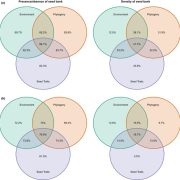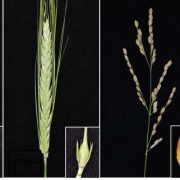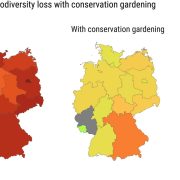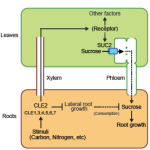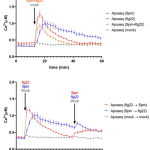State of ex situ conservation of landrace groups of 25 major crops (Nature Plants)
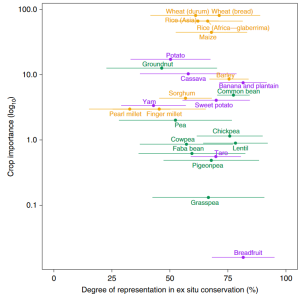 Landraces are local cultivars developed by traditional agricultural methods. Landraces not only represent an essential genetic resource for modern crop breeding but are also key to understand crops’ domestication processes. Thus, it is crucial to collect landraces for genebank conservation since demographic changes and climate emergency threaten in situ populations. Although there have been extensive efforts for landraces to be represented ex situ (landraces are more conserved than their wild relatives), there is a limited information about the distribution of landraces and their degree of representation in genebanks. In this work, Ramirez-Villegas et al., use a conservation gap analysis methodology that predicts the distributions and quantify the current ex situ conservation of more than 70 groups of landraces. At the landrace group level, differences in conservation status were found within many crops depending on morphologic characteristics. To conclude, the modelling processes and the landrace group classification described highlight the potential of associating characteristics of cultivated plant populations with environmental and socioeconomic predictors within the origin and the crop diversity. In any case, the authors also emphasize the necessity of field reconnaissance and of partnering with traditional agrarian communities. (Summary by Eva Maria Gomez Alvarez, @eva_ga96). Nature Plants. 10.1038/s41477-022-01144-8
Landraces are local cultivars developed by traditional agricultural methods. Landraces not only represent an essential genetic resource for modern crop breeding but are also key to understand crops’ domestication processes. Thus, it is crucial to collect landraces for genebank conservation since demographic changes and climate emergency threaten in situ populations. Although there have been extensive efforts for landraces to be represented ex situ (landraces are more conserved than their wild relatives), there is a limited information about the distribution of landraces and their degree of representation in genebanks. In this work, Ramirez-Villegas et al., use a conservation gap analysis methodology that predicts the distributions and quantify the current ex situ conservation of more than 70 groups of landraces. At the landrace group level, differences in conservation status were found within many crops depending on morphologic characteristics. To conclude, the modelling processes and the landrace group classification described highlight the potential of associating characteristics of cultivated plant populations with environmental and socioeconomic predictors within the origin and the crop diversity. In any case, the authors also emphasize the necessity of field reconnaissance and of partnering with traditional agrarian communities. (Summary by Eva Maria Gomez Alvarez, @eva_ga96). Nature Plants. 10.1038/s41477-022-01144-8



